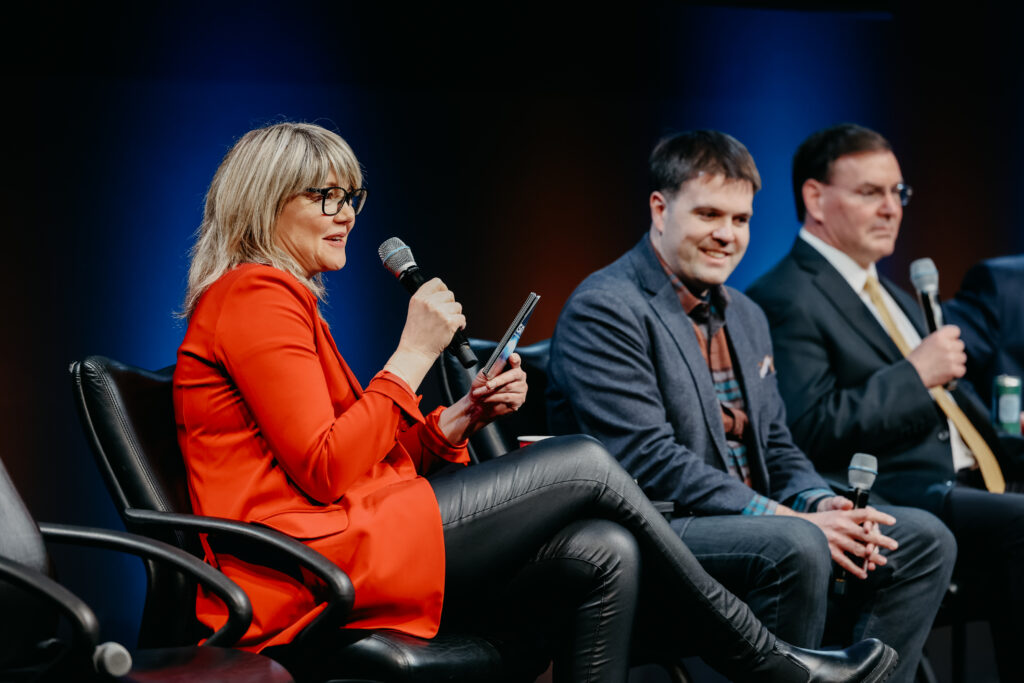By Chris Forrester

This panel at the Smallsat Symposium, held in Mountain View on February 5, focussed on capacity issues but also looked at applications which could be anticipated in the future. Dr. Jim Crawford (Chairman & CTO, Orbital Insight and now a subsidiary of Privateer Space) encouraged his speakers to be controversial. He also said that every year it seemed that not only was capacity increasing in space but that EO was offering a wider range of applications.
Christopher Lentz, Lockheed Martin Fellow at Lockheed Martin Space (LM), reminded delegates that last year they acquired Terran Orbital which represented a “huge opportunity” for LM. He said that Terran would be bringing in its automated manufacturing abilities for smallsats, and LM would add customer opportunities. Lentz added that Terran had a portfolio of 80 missions on its books and they were still open to enquires from the market. They are part of LM but can still supply small satellites to whoever.”

“What’s new in EO is high-resolution, thermal Infra-red, and hyper-spectral imaging. In the past the first task was getting into orbit any imagery, then it became ‘my imagery is better than yours’, then it became the revisiting frequency, and it is totally exciting where we are going. And in my view, it is not going to stop. Like in any industry there will be consolidation, and some will survive, and some won’t. But there’s also a difference in the customers. They might say they want to better understand environmental monitoring, or the health of my crops. There’s another community out there which wants its own system that they can control. It could be a national mission, that they do not want taken away from them.”
Lentz outlined the two demonstrations coming to orbit this year: the first was the LM 400 bus, which he said was the most versatile and capable mid-sized satellite. It can support EO to communications and work from LEO to GEO orbits, and configured for high or low power. It will launch on a Firefly rocket in 1H/2025. The second is TacSat, an intelligence, surveillance and reconnaissance spacecraft with a mission to prove specialized sensing and communications capabilities on orbit. It is the first where we can put a 5G payload for the military.
Nina Soleng, Head of Communications at KSAT – Kongsberg Satellite Services. Norway based, and Soleng stressed they were also heavily involved in EO. “We provide an independent view for clients and to turn that data into insights and useful and actionable information. We always have to remember that latency in our business is not so much from the satellite itself but the handling of that data once it has been received.”
She said that KSAT was excited by hyper-spectral and thermal imaging. “But the question is, who will pay for it? One of our customers is in the energy sector and we know they will be happy to see some of the new services from the technology and many of them are shifting their focus onto green energy. With ‘thermal’ and the opportunity for improved monitoring, and with extra satellites coming on line this year the sector is in a good place.”
Kevin Flesher, Sr Director for Space/ISR Solutions at Maxar Intelligence, and started by reminding delegates that Maxar was highly regarded for its very high-resolution imagery. On February 4 Maxar launched a pair of EO craft (their 5th and 6th WorldView craft) bringing the total launched to 6 since May 2025. We were sold out in many regions but now have additional capacity. There’s been growth in high-level monitoring and re-visiting, and this is very much the ‘sweet spot’ for the industry. There has to be diversity, in order to handle day or night, bad weather and so forth. The problem, as ever, is who pays?
Adam Maher, Founder & CEO, Ursa Space Systems Inc., said his company’s focus was on software and bringing in the huge amounts of data in. “We turn it into insights that are meaningful for the end-user, especially for non-technical end-users. There are changes taking place in EO, where a number of satellites are now reliable enough to tackle more tactical or operational missions. We can do stuff on the same day, and this might be what was happening either side of a border. And we can interpret that activity: is it normal, or not normal?”
“It must be remembered that it is essential to think of the rest of the chain, not just in space. The infrastructure is in place and the technology understood but is the business model in place and while it might not be the exciting part of the business it is, for us, crucial and allows us to enter some very different markets. Often, we are dealing with fairly new businesses and frequently thought has not been given to long-term pricing or pricing for a rapid turn-around. Even something simple like having someone working over a weekend, or at night. There are plenty of vendors who do not have staff working over the weekend or at night! That might mean we cannot deliver. Or dealing with Asia which has working days that are very different from the U.S.,” Maher added.
